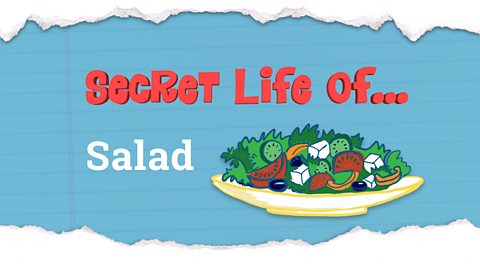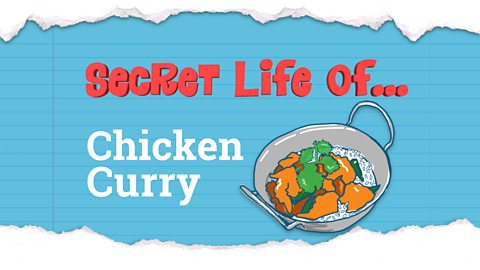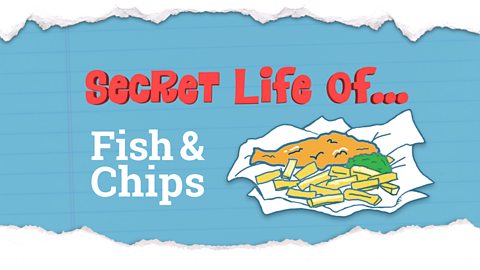Female 1 (VO):Shepherd's pie.
Stefan Gates:
Shepherd's pie is a big fat lie. First of all, it's not even really a pie; it's got no pastry layer on the top of it. But secondly, I've had hundreds of shepherd's pie, not one has had a significant amount of real shepherd in it. But what it does have lots of in it, is this stuff here: lamb.
Stefan Gates:
Britain's fields are full of sheep. And every spring, they get even fuller when the female sheep give birth to a couple of lambs each. Before they get to a year old, the lambs are fattened up on grass and feed, ready to be made into meat. You can buy British lamb most of the year, but sometimes it's cheaper to bring it in from other countries like New Zealand… We eat almost every part of the lamb, but some bits - like lamb chops - are more popular and more expensive, so the the other stuff is often made into mince, and that's what we use in a shepherd's pie.
Stefan Gates:
Shepherd's pie was originally made of all the leftovers from your Sunday lunch, so all the meats and all the vegetables were chucked in together. But a bit part of it is these fellas here: carrots. Now, were you ever told that carrots help you see in the dark? It's a weird one this. During World War II, the Germans couldn't understand why the British could see their planes during the night. Now, we'd invented radar, but we didn't want the Germans to know that, so the British military spread this rumour that British pilots ate masses and masses of carrots, and that they helped them see in the dark. But there are loads and loads of other amazing facts about carrots.
Stefan Gates:
It's autumn on this Scottish carrot farm. Grower, Steven Jack, is checking on his crop that was planted way back in spring. So, heres a question for you: What colour are carrots? Orange, you say. Ha, ha, well, not always.
Steven Jack:
Here we have a few… very deep purple carrots. The purple carrots you can see here are typical of the appearance of carrots 400 years ago… Very few of us have ever tasted this particular… carrot, which has a very distinctive taste… and also, as you can see, it's got a fantastic colour.
Stefan Gates:
Once upon a time, a plant breeder was wondering what to get the Dutch royal family for a nice present, and I thought, "I know; I'lI turn purple carrots orange." So he did. And their national colour is orange. Definitely not purple… What makes a carrot orange is something called beta-carotene. And, get this, if you were to eat tonnes and tonnes of carrots, the beta-carotene would eventually turn you… yep, orange. But definitely not purple.
Steven Jack:
These carrots we harvested yesterday. We brought them to the site today to wash them and sort them and size them. This afternoon, the carrots in the packs will leave here, and tomorrow they'll be in supermarkets all over the UK.
Stefan Gates:
And here are those carrots in my shepherd's pie; which needs just one more thing to top the whole thing off.
Stefan Gates:
Oh, yeah. Mash potato on top. Now… the secret to brilliant mash potato is this: the potato. And that's because there are two main types of potato. You got floury potatoes and waxy potatoes. Now, for mash you need floury ones. If you use waxy potatoes for your mash, you get a big, sticky glue and it's a bit horrible. I know this, 'cause I've done it - more than once by mistake. So stick to floury potatoes for mash and waxy potatoes for making roasties. Keep 'em apart is the best way to go about it. So we're gonna put all of the mash on the top, and then… put it in the oven to crisp it all up.
Stefan Gates:
This mash, made from a famous floury potato called a King Edward, is lovely, light and fluffy. Ah, thank you your highness. [CLEARS THROAT] Anyway, it's using lamb that means this is a true shepherd's pie. If you made the same pie with the same basic ingredients but any other meat, it would be called a cottage pie.
Stefan Gates:
So it's not a real pie, there's no real shepherd in it, and it doesn't make you see in the dark. So why is it one of Britain's favourite foods?.. I'lI tell you why… 'cause it's blooming lovely.
Video summary
Images, practical cooking demonstration and commentary explains where each of the component ingredients for a traditional Shepherd’s Pie comes from, where it is grown, why it is used and what it adds to the dish.
Every ingredient has a function. It explains where the lamb mince comes from, with scenes to show the seasonality of British lamb.
It describes how carrots are grown and harvested, and how they come to be orange rather than purple.
It debunks story of carrots ‘helping us to see in the dark’ but explains their valuable source of beta-carotene.
It describes the difference between waxy and floury potatoes for cooking and how to make mash.
This clip is from the series The Secret Life of Our Favourite Dishes.
Teacher Notes
Pupils could make the dish shown in small groups.
They could taste some prepared mash, flavoured with different ingredients (mustard, onion, chives).
Pupils could experiment and flavour or make mash with different potatoes and root vegetables (sweet potatoes, carrots), and different flavourings (herbs and added ingredients).
This clip will be relevant for teaching Design and Technology and/or Food Technology at KS2 and KS3 in England and Wales, and 2nd and 3rd level in Scotland.
The story behind a salad. video
Practical cooking demonstrations and commentary, explains where the common ingredients for salads come from.

The story behind chicken curry. video
Images, practical cooking demonstration and commentary, explains where each of the component ingredients for a traditional chicken curry comes from.

The story behind fish and chips. video
Images, practical cooking demonstration and commentary explains where each ingredients for a traditional fish and chip meal comes from.

The story behind spaghetti bolognese. video
Images, practical cooking demonstration and commentary explains where each ingredients for a traditional spaghetti Bolognese comes from.
